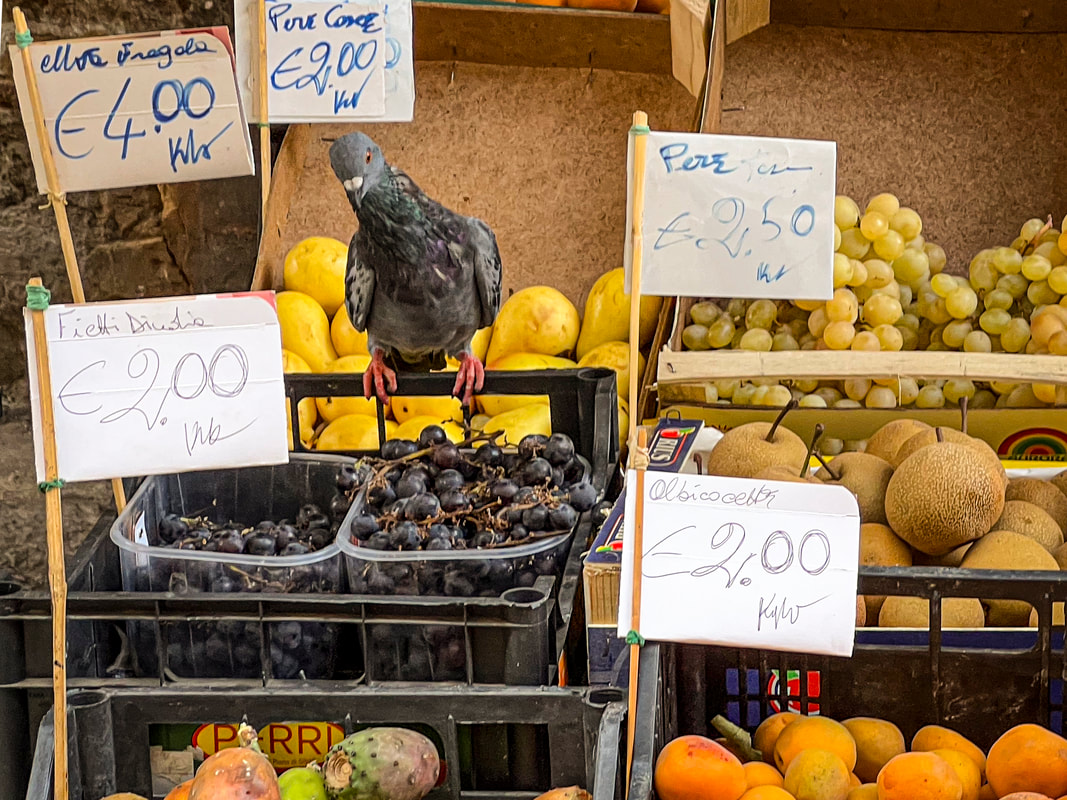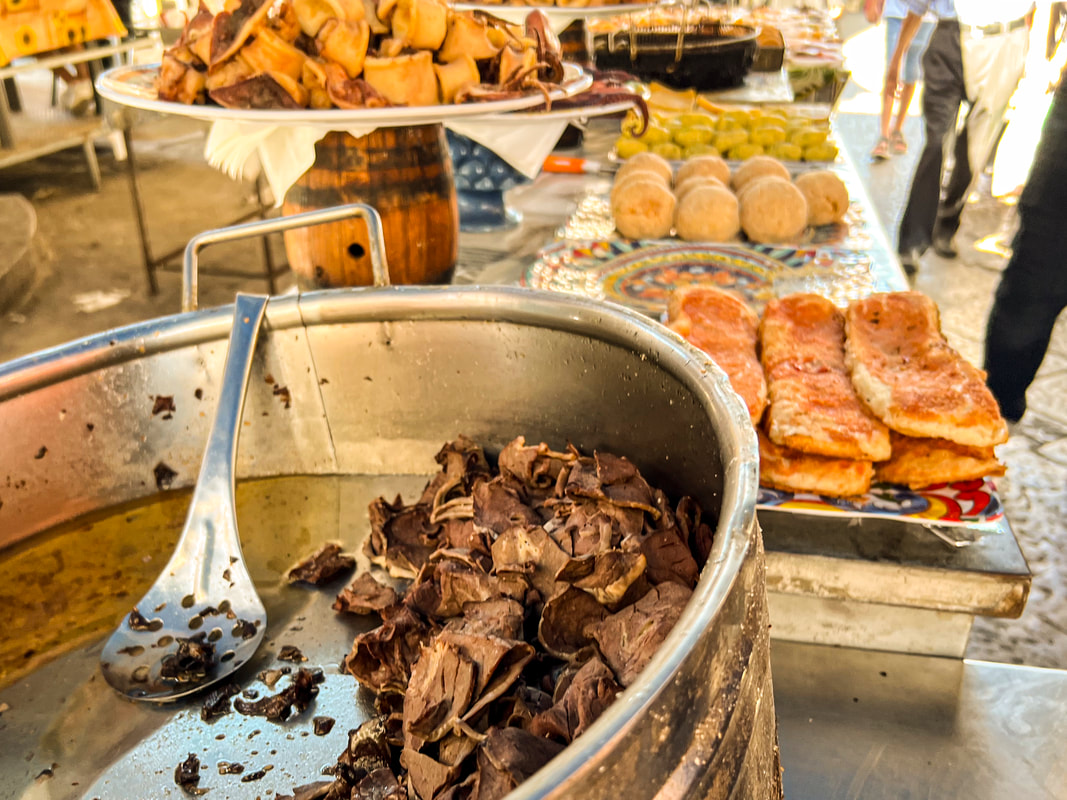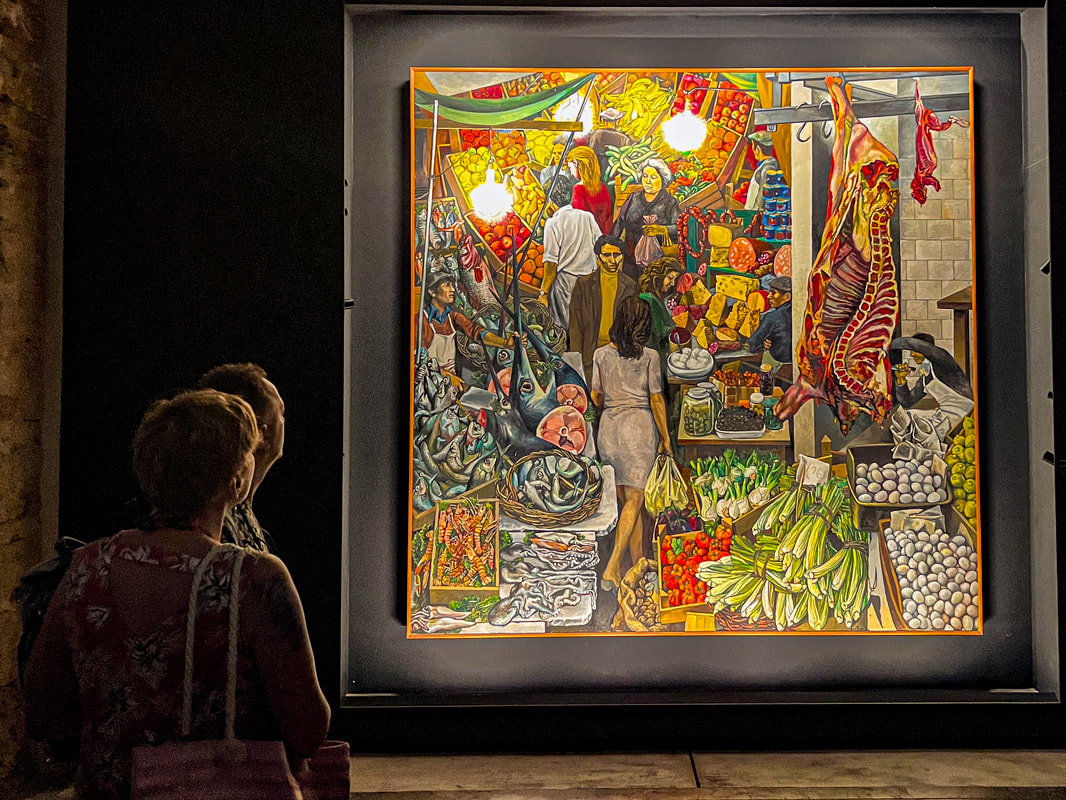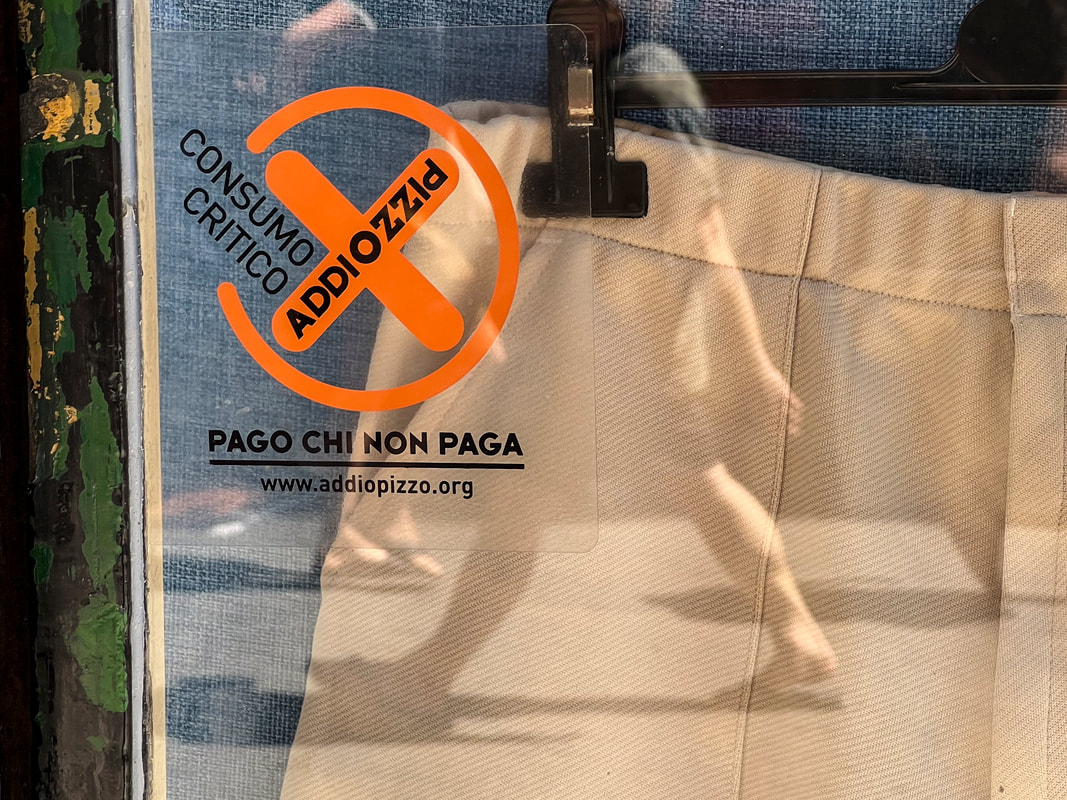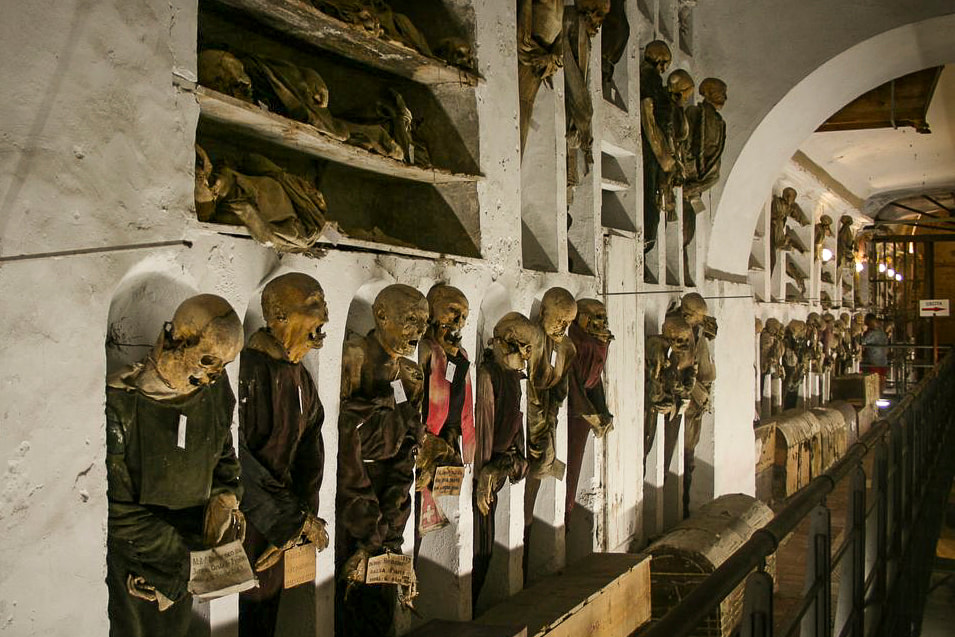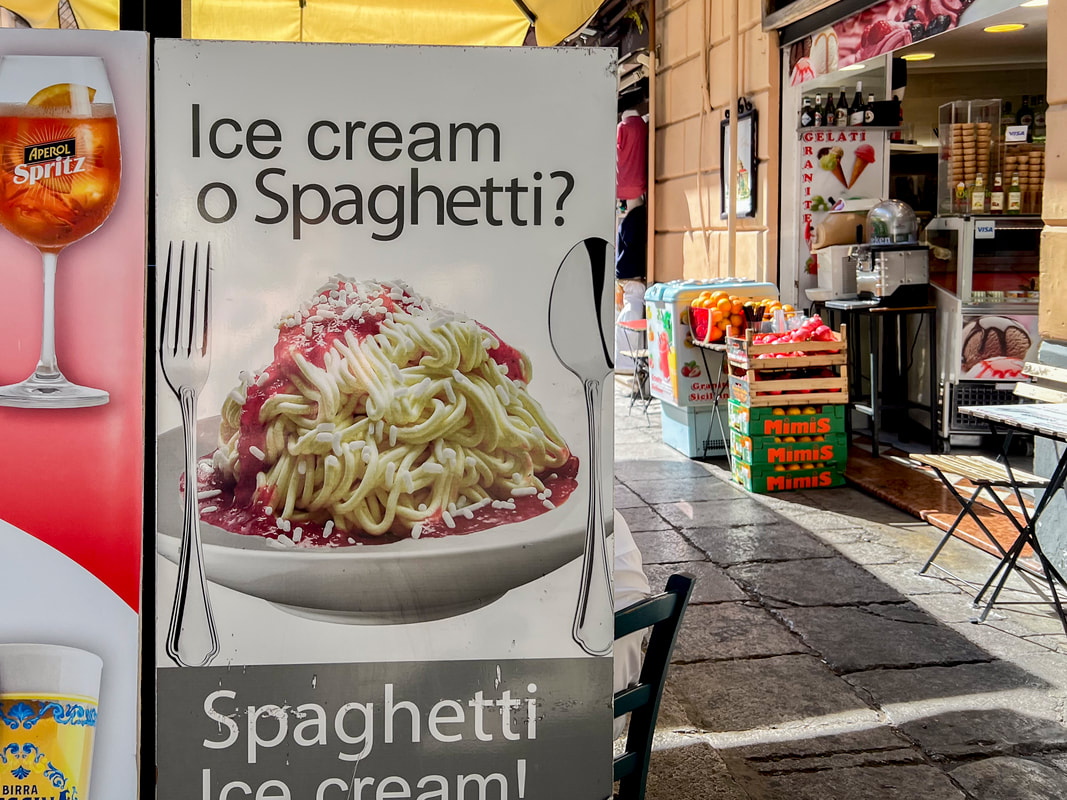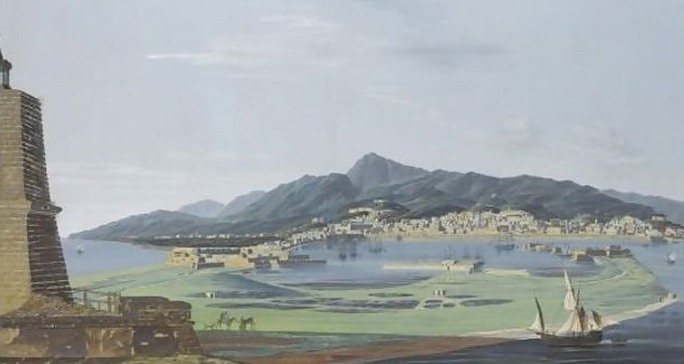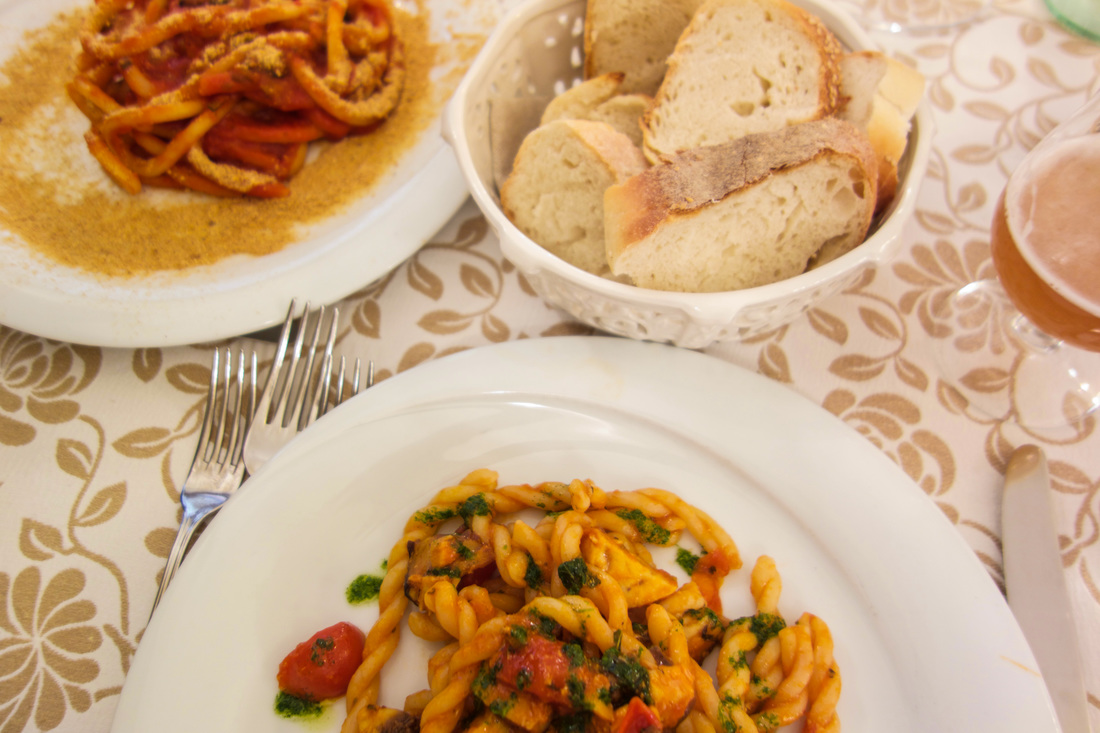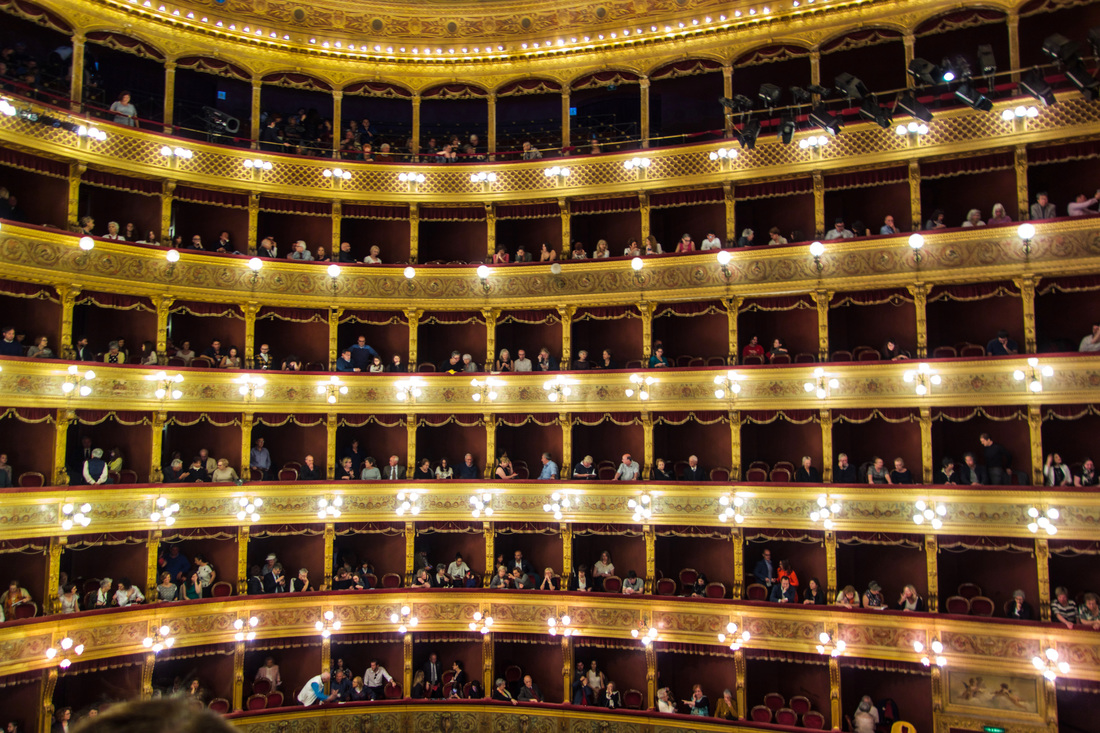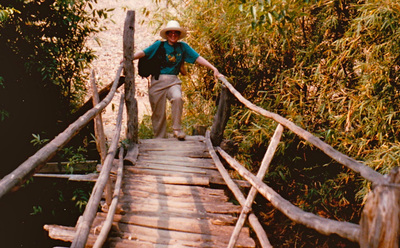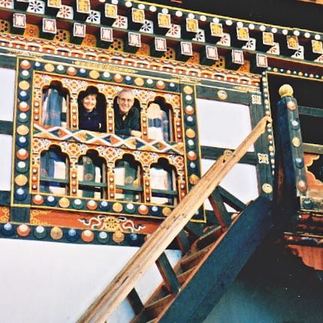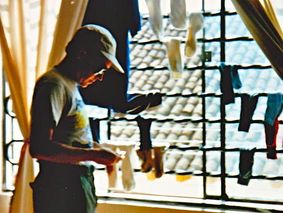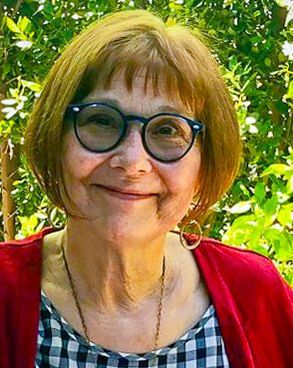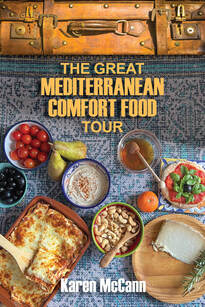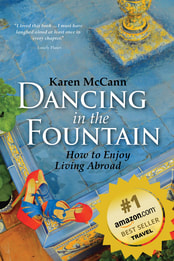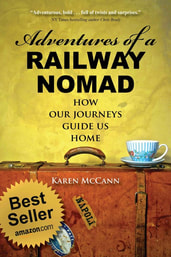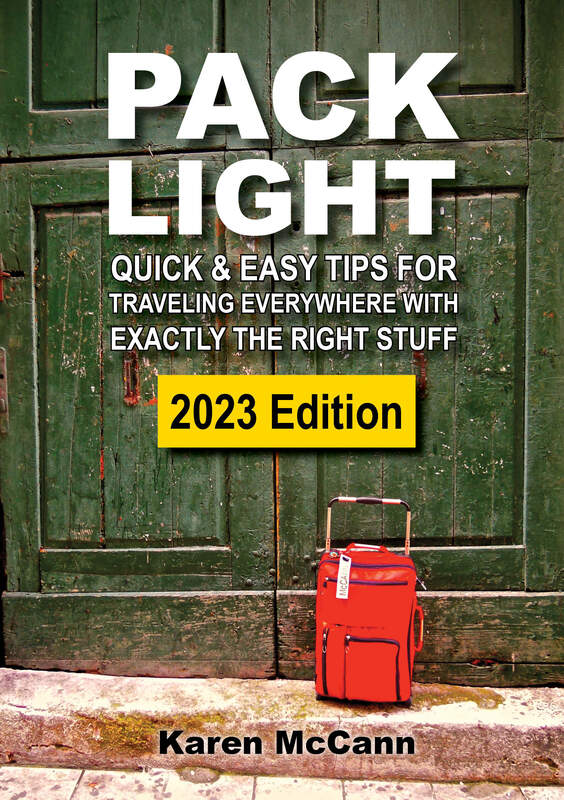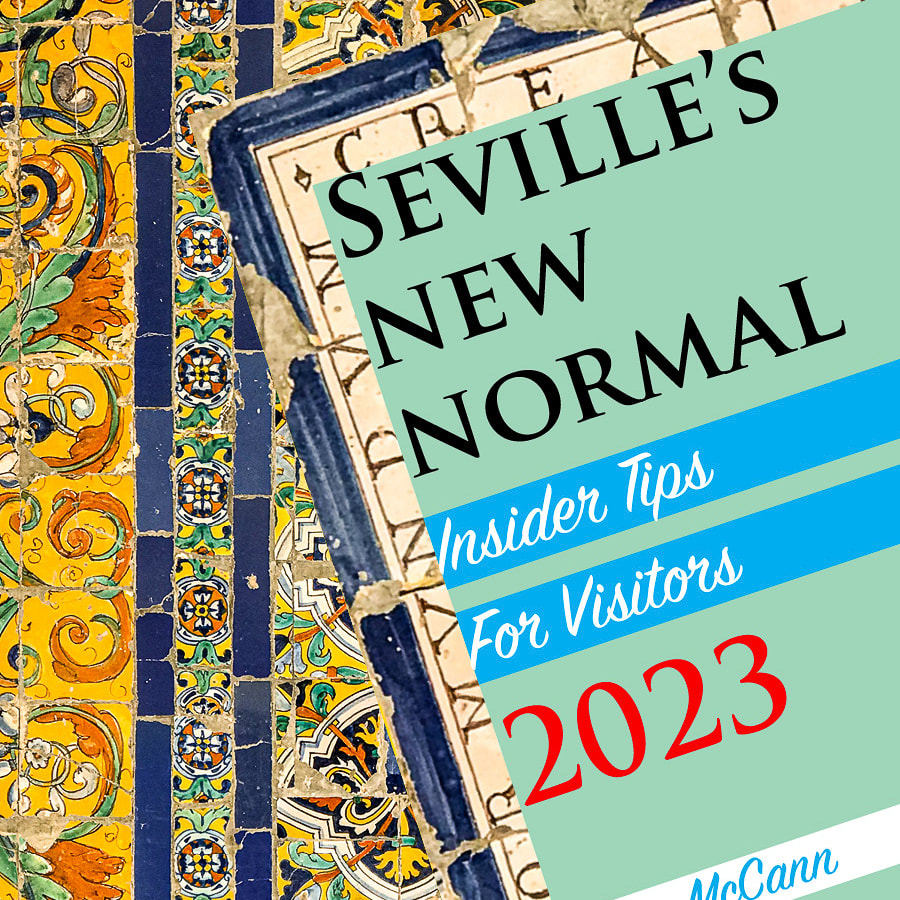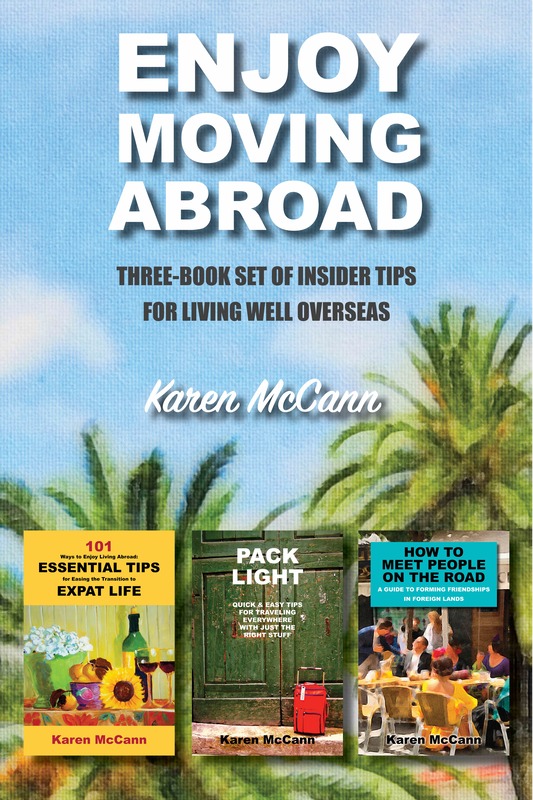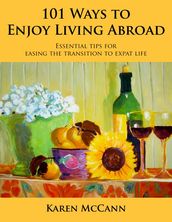|
On our first morning in Palermo, Sicily, Rich bounded out of bed with the unbridled joy of a man who knows he’s having ice cream for breakfast. I’d read about the Sicilian tradition of starting the day with scoops of gelato stuffed into brioche, and as Rich kept pointing out, I owed it to my readers to dig deep into this subject. We found a café and tried to place our order. “Brioche con gelato? Now? Well, yes, you could,” said the proprietor, in the dubious tones of one who acknowledges that yes, you could wear pink to Don Corleone’s funeral, but are you sure you want to? “It’s not for breakfast?” I asked incredulously. How did I get this so wrong? “When is it eaten? Later in the morning?” “Yes. Morning, lunch, afternoon. Any time.” Except, apparently, now. We ordered croissants instead. This was my first hint of just how slippery I’d find Sicily’s culinary traditions. Palermo is famous for its street food, which is sold in carts and hole-in-the-wall eateries all over town, and I soon learned what people really prefer for breakfast is pani ca' meusa (in proper Italian, pane con la milza). To make milza, you boil up cow spleen, lung, and trachea, fry them in pig lard, and tuck them into a bun, possibly sprinkling cheese on top. Everyone assures me this meal will give you the strength to get up and do what needs to be done. Did I try it? Oh, hell, no. There are some things at which even I draw the line. But those raised here love this kind of stuff. Frequently conquered and perpetually impoverished, Sicily has spent centuries getting creative with obscure animal parts. Whenever I see gusts of smoke rising from a grill, I know it’s stigghiola, lamb or goat guts rolled around a skewer or leek and cooked over the flames. Another common sight is a large, cloth-covered basket known as a panaru, inside of which is frittola. Nobody seems to know exactly what ingredients make up frittola, but the prevailing theory is cartilage, lard, and some kind of meat. Street vendors dip their hand under the cloth, extract a greasy blob, drop it onto oiled paper, and pass it over to you. Mmmmm. I’ve had ample opportunity to observe all this as our Airbnb apartment is in the heart of Capo, one of the city’s largest street markets, built a thousand years ago to serve the new Arab overlords. Since then it has been a favorite with everyone from families to princes to pirates and has sustained generations of pickpockets. These days Capo has reinvented itself as “a bustling agri-food trading hub,” catering to tourists as well as locals. There’s constant hubbub. Vendors shout out their wares, delivery boys whistle and sing, bands play, fireworks explode (mostly at night, but on Sunday at 9 am) (nope, no idea why), weddings are celebrated, religious statues are carried through, and astonishing amounts of fresh produce and street food change hands. I love the sprawling, shouting, chaotic vitality, and so did Sicily’s renowned artist Renato Guttuso. He painted another old Palermo street market La Vucciria so vividly that it is now among the most beloved works of art on the island. I was determined to see Guttuso’s painting, now displayed in the 14th century Steri Palace. We went there the first morning, right after our croissants, and I was slightly dismayed to discover viewing the painting could only be done in the context of a gruesome guided tour of an Inquisition prison. The building housing the prison, the painting, and a few other random artifacts started out as home to Palermo’s nobility; 200 years later it was surrendered to the Spanish when they became Sicily’s newest overlords. As this happened during the Inquisition, the palace was soon filled with prisoners who created elaborate graffiti using scrapings from terra cotta floor tiles and their own bodily fluids. (You do not want to know the details.) Eventually everyone in those cells was executed in the palace’s front garden, on the spot now occupied by the Strangler Tree, said to have grown to its enormous proportion thanks to all the blood soaked into the soil. Yes, eventually I saw Guttuso’s painting, which was marvelous, but emerging into the sunlight of late morning, I realized the grisly tour had left me a bit demoralized. Rich said he knew just what I needed to recombobulate: brioche con gelato. Apparently it's typically eaten as a second breakfast. The day proved typical of our time here in Palermo: the delightful, the delicious, and the deeply disturbing all jostling for attention. On the positive side I reconnected with a bookseller I’d met during a brief visit here in 2016. Retired accountant Pietro Tramonte presides over the Biblioteca Privata Itinerante (Private Traveling Library), a warren of 75,000 books in a back alley near the marina. For those who love to read, he says, “the paper material is like cheese on macaroni.” I showed him the photo of us from seven years ago, and he was delighted, posing for more pictures and then taking us out for coffee. Another wonderful experience was lunch with a Palermo couple in their home, arranged through EatWith. Piera and her husband Rino gave us a warm welcome and platters of scrumptious food. Soon all four of us were talking at once, waving our hands around for emphasis, and laughing together like vecchi amici (old friends). Inevitably, talk turned to one of the island’s most famous exports: the mafia. “More dangerous than ever,” said Rino. “They do not affect our days, our lives directly, but they are deep inside industry and government.” I’d heard about the anti-mafia movement, started in 2004, that included local businesses placing a sticker on their window to indicate their refusal to pay “pizzo,” extortion money. So far I have only seen one such sticker, and I can only assume everyone else who posted them now sleeps with the fishes. To be fair, Palermo’s blood-curdling side was evident long before the mafia, as witnessed by the Cappuchin Catecombs. Here we found 8000 dead bodies hanging from the walls, hooks in their backs and a wire around their chest to keep them from toppling forward onto us. Many appeared to be screaming. Frankly, it was all I could do not to scream myself. The oldest were 17th century monks, some wearing heavy ropes of penance around their necks. In the 19th century it became fashionable for prosperous citizens to pay the Capuchins to place deceased relatives in the catacombs. Families would visit, dust the corpse, and replace any clothing that had rotted. They had to keep paying the Capuchins, and if they fell behind, the bodies would be removed and set aside until the account was paid up in full. “Sicily is a Nutters’ paradise,” a friend wrote to me some months ago, and boy, was she right. Palermo is eccentric, rich in history, and quirky in nature. I just love this ancient city. But in a few days, we’re off to another part of the island where, among other things, they claim to have an actual letter written by the Devil himself. More on that next week. JUST JOINING US? THE NUTTERS' WORLD TOUR SO FAR SUMMER 2023: CALIFORNIA SPRING 2023: SPAIN WANT TO STAY IN THE LOOP? Subscribe to receive notices when I publish my weekly posts. Just send me an email and I'll take it from there. [email protected] And check out my best selling travel memoirs & guide books here. PLANNING A TRIP? Enter any destination or topic, such as packing light or road food, in the search box below. If I've written about it, you'll find it.
15 Comments
When I was a young girl, it seemed every Italian restaurant had paintings and/or murals entitled “Views of Palermo.” Often done by the spouse, mistress, or cousin of the owner, these works tended (at best) to look like this. Naturally I grew up thinking of Palermo as having faded colors, blurry edges, and not much going for it beyond a pretty harbor. So you can imagine my surprise when I discovered, stepping off the early morning ferry from Sardinia, that Palermo is a bright and bustling city, rich with ancient monuments, zany street life, and very, very good pasta. On the downside, we had left Italy’s tourist-free zone. Indeed, in one small trattoria we were thoroughly overshadowed by a group of tall, blonde Swedish women in their early twenties; they arrived after us and yet for some reason were served instantly and with fawning attention while Rich and I cooled our heels and begged repeatedly for beer. But such moments were a small price to pay for the many delightful and surprising views of Palermo that awaited us. One of my first discoveries was the Biblioteca Privata Itinerante (Private Itinerant Library) of Pietro Tramonte, a retired accountant and “impromptu poet” known for his love of books. Yes, actual, old-fashioned paper books; for those who love to read, he says, “the paper material is like cheese on macaroni.” Today, his labyrinth of tarp-covered shelves in an alley off Piazza Monte Santa Rosalia contains (he says) upwards of 45,000 volumes, which he parts with in return for cash, trade-ins, or sometimes nothing at all. “If a kid around here is asking me for a dictionary for a task at school, what should I do? Do I not give it to him?” Pietro does stock English books, but sadly my commitment to traveling light with my Kindle meant I could not buy, beg, borrow, or barter for any of his wares. At the suggestion of our Airbnb landlady, Rich and I bought tickets to La Cenerentola (Cinderalla) at Palermo’s gorgeous Teatro Massimo, the largest opera house in Italy. In the late 20th century it was closed for decades, as the financing of needed repairs became plagued by corruption and in-fighting worthy of the Godfather saga — which, coincidentally, filmed its final scenes there at the Massimo. I kept looking for fake bloodstains on the floors. We didn’t see anything quite that gruesome, on or off the stage, unless you count the way the artistic director of Rossini's classic opera butchered the plot, characters, and setting in a misguided attempt at extreme originality. Luckily he restrained himself from altering the music, which soared magnificently through the vast space, showing off the opera house’s famously flawless acoustics. But it was the funky side of Palermo that really appealed to me. Rich and I had planned a week in Palermo, followed by a leisurely train ride to Napoli to meet friends, then a flight from Rome to California to deal with a family matter. But fate had other ideas. On Monday morning I received word that the family situation now required our presence more urgently. Within hours, we’d arranged to fly out that night from Palermo to Rome, and then take a 6:00 am flight to Paris, with a connection to San Francisco that had us there by lunchtime on Tuesday. As you can imagine, my head is still spinning from all the pivoting and dashing about. I’ve found that there are certain kinds of places, such as airplanes and hospitals, that have a strange sense of timelessness; the empty hours become less trackable than ordinary time. Today I am feeling a similar sense of placelessness. In the last month I’ve traveled from California to Seville to Italy and finally back to California, which I'd not expected to see again for many months. I awoke this morning feeling utterly displaced in my own bed. When and where am I? Did I or did I not actually leave California four weeks ago? Luckily, I have only to review my photos to remember all the small, wonderful adventures I’ve enjoyed in the last month. Like those restaurateurs I remember from my childhood, I can hold on to fond memories of my past with my very own “Views of Palermo.” Have you visited Palermo, or other parts of Italy that resonated with you? I'd love to hear about your experiences in the comments below. YOU MIGHT ALSO ENJOY |
This blog is a promotion-free zone.
As my regular readers know, I never get free or discounted goods or services for mentioning anything on this blog (or anywhere else). I only write about things I find interesting and/or useful. I'm an American travel writer living in California and Seville, Spain. I travel the world seeking eccentric people, quirky places, and outrageously delicious food so I can have the fun of writing about them here.
My current project is OUT TO LUNCH IN SAN FRANCISCO. Don't miss out! SIGN UP HERE to be notified when I publish new posts. Planning a trip?
Use the search box below to find out about other places I've written about. Winner of the 2023 Firebird Book Award for Travel
#1 Amazon Bestseller in Tourist Destinations, Travel Tips, Gastronomy Essays, and Senior Travel
BLOG ARCHIVES
July 2024
CATEGORIES
All
|
